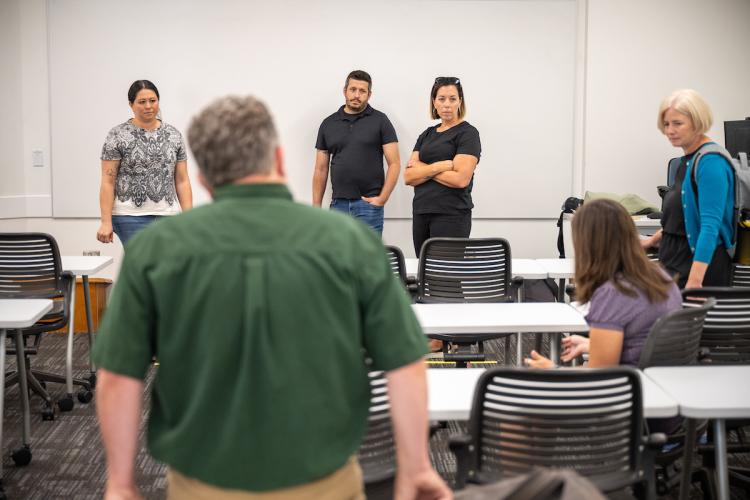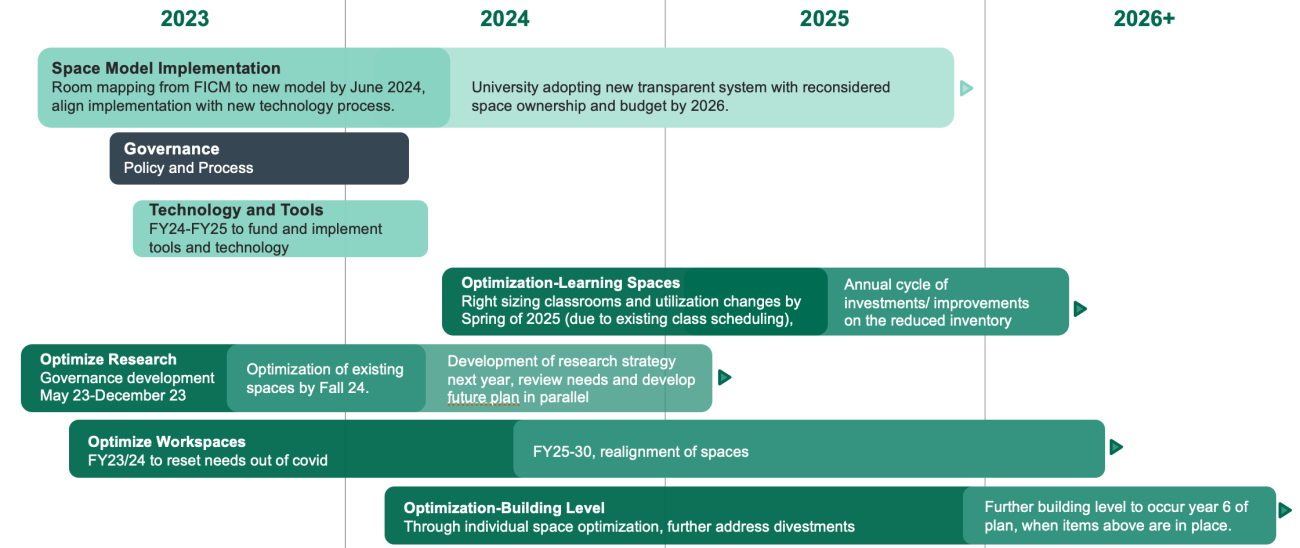
OHIO’s Campus Space Optimization Initiative aims to revolutionize traditional higher education approach to space allocation

As building and space needs evolve across higher education, major industries and beyond, Ohio University is working toward revolutionizing the traditional approach to space allocation with the Campus Space Optimization Initiative, a forward-thinking initiative that includes a comprehensive reimagining of space function, ownership and budget allocation across all OHIO campuses.
The Campus Space Optimization Initiative is not simply focused on optimizing space – it’s also focused on right-sizing areas to ensure that all facilities are serving an intended purpose. Part of the initiative also includes rethinking the function of spaces on all campuses, providing transparency on the availability and function of space across OHIO’s campuses, and looking at efficient use of current spaces.
“Ohio University is changing the way we look at and use space in order to ensure that all of our spaces are used to the highest and best use and that our investments are going toward optimizing our assets,” Interim Vice President for Finance & Administration, CFO and Treasurer John Day said. “Individuals from across the institution have participated in the development of this framework and provided input on ways we can better allocate space to provide efficiency and enriching experiences for our students, faculty, staff and community.”
Currently, space at OHIO is categorized and tracked using traditional higher education classifications that are based on a singular use of space. These categories often limit or restrict utilization of spaces by narrowly defining what activities take place there and who may use the space. The Campus Space Optimization Initiative proposes a new space model that classifies space more broadly into four groups: 'Schedulable' spaces for organized events, 'Informal' spaces fostering casual interactions, 'Individual Workspaces' promoting focused work, and 'Dedicated Activity/Purpose' spaces tailored to specific functions.
These groups will allow the University to find opportunities for additional uses, increase utilization, and reduce the need for single-purpose spaces, while diverting more resources toward student impact areas.
Additionally, this project aims to engage University leaders to rethink the role of space at OHIO, identify areas that can be better utilized, and propose strategies and projects to improve and optimize facilities in the future — fostering innovation, improving collaboration, and enhancing the overall campus experience. The project goes beyond just addressing current space challenges and aims to create a foundation and model to support OHIO’s future growth and evolution.
Framework Implementation Timeline

Six focus groups were created with a wide range of participants including faculty, staff, students and community members to offer recommendations and analyses that will serve as a starting point for implementation. The six focus groups included: Formal Learning Spaces; Collaboration, Work, & Study Spaces; Research Space; Student, Alumni, & Community Engagement; Budget; and Technology & Scheduling Tools.
Presented at the January 2024 Board of Trustees meeting, Day explained that the next steps in the initiative include the establishment of governance structures to drive implementation and ensure the application of this new framework to all projects and renovations in the future. Establishing a university-wide space governance committee that is representative of individuals from diverse areas across the institution will provide a format in which space opportunities and needs can be integrated and addressed with an institutional perspective, allow for data-informed decision-making within a transparent structure and the prioritization of project requests with a university-wide lens.
The University is already implementing parts of this initiative through the design of the new renewal strategy for the College of Fine Arts facilities which includes a combination of renovation, relocation and new construction, intended to reimagine arts education at OHIO and enable the arts to have a greater impact across the campus, community and surrounding region.
Individuals from the OHIO community continue to have the opportunity to provide feedback on the initiative by submitting their input here.
